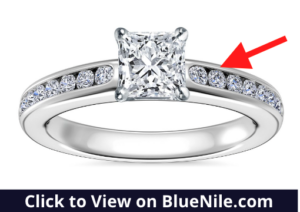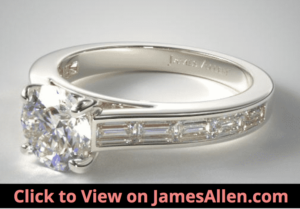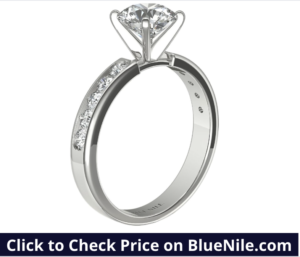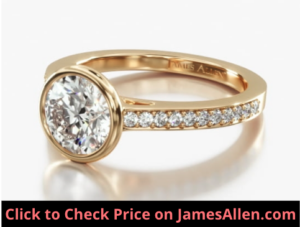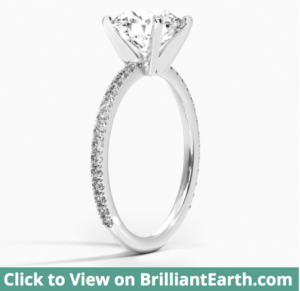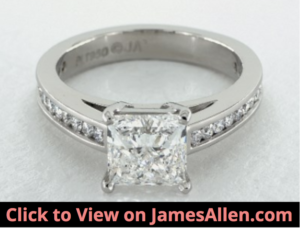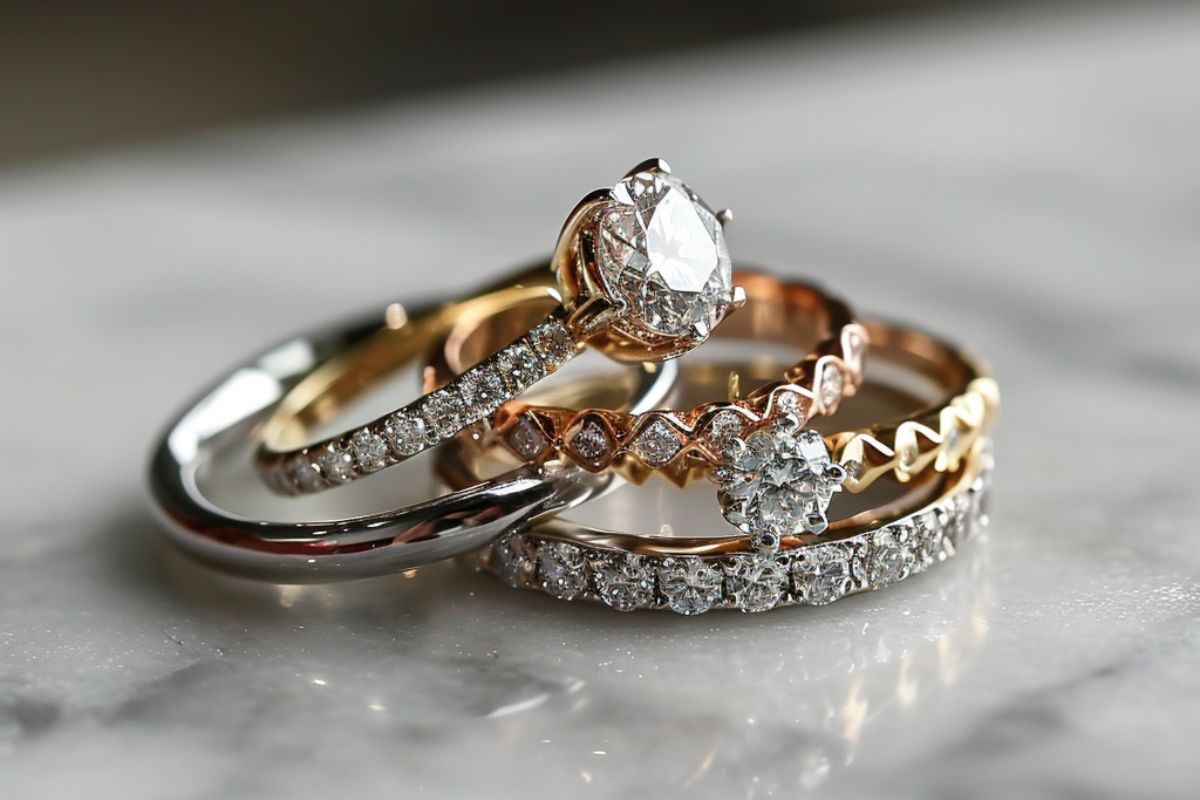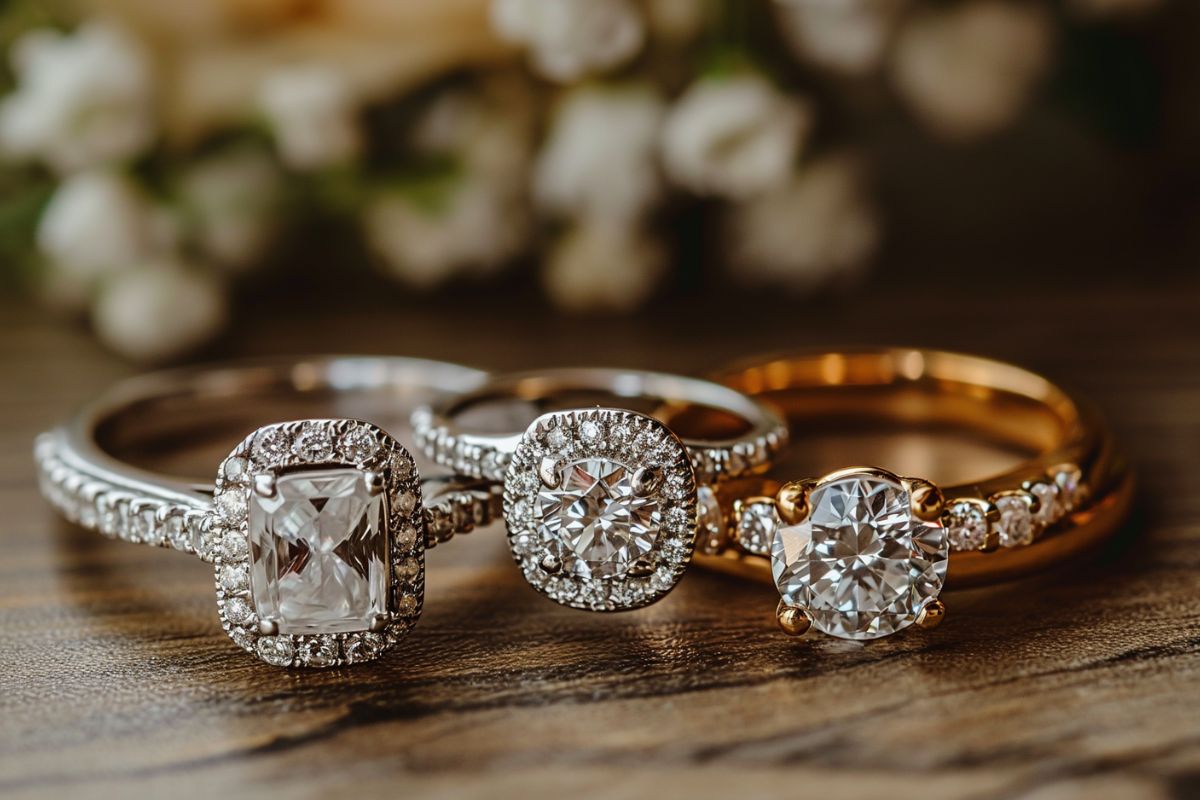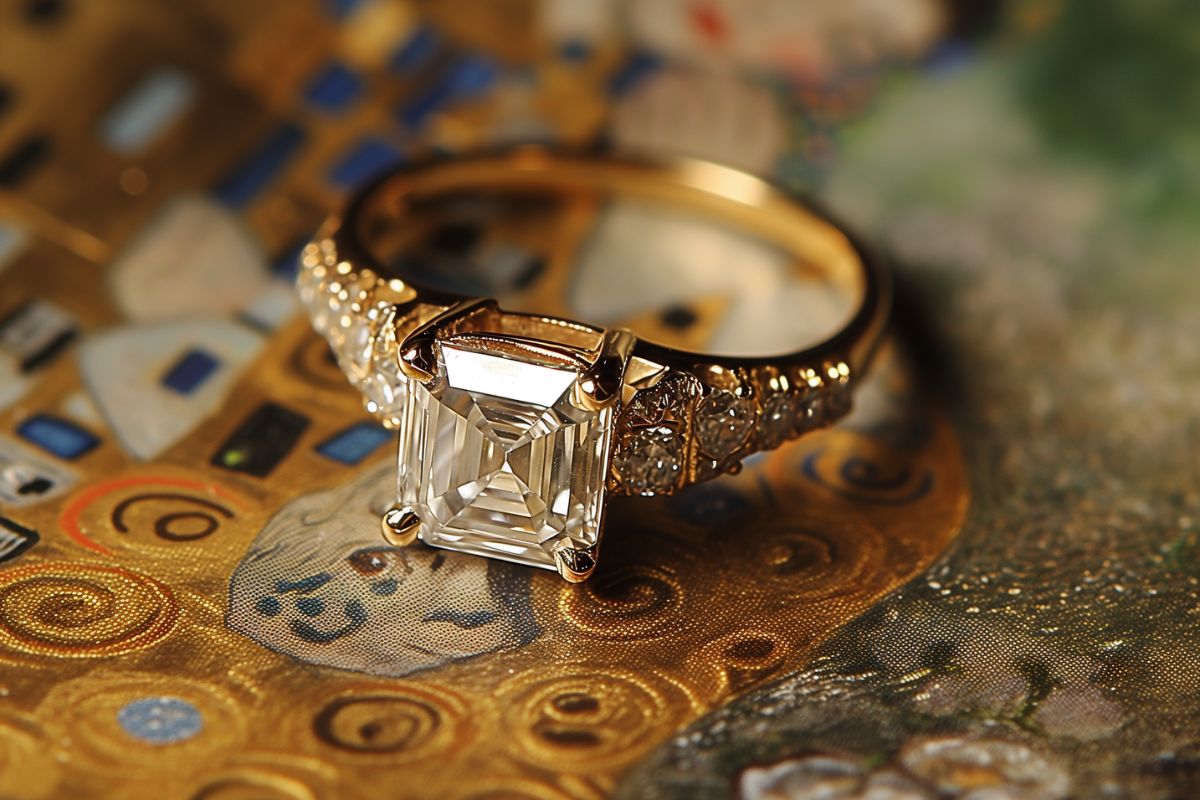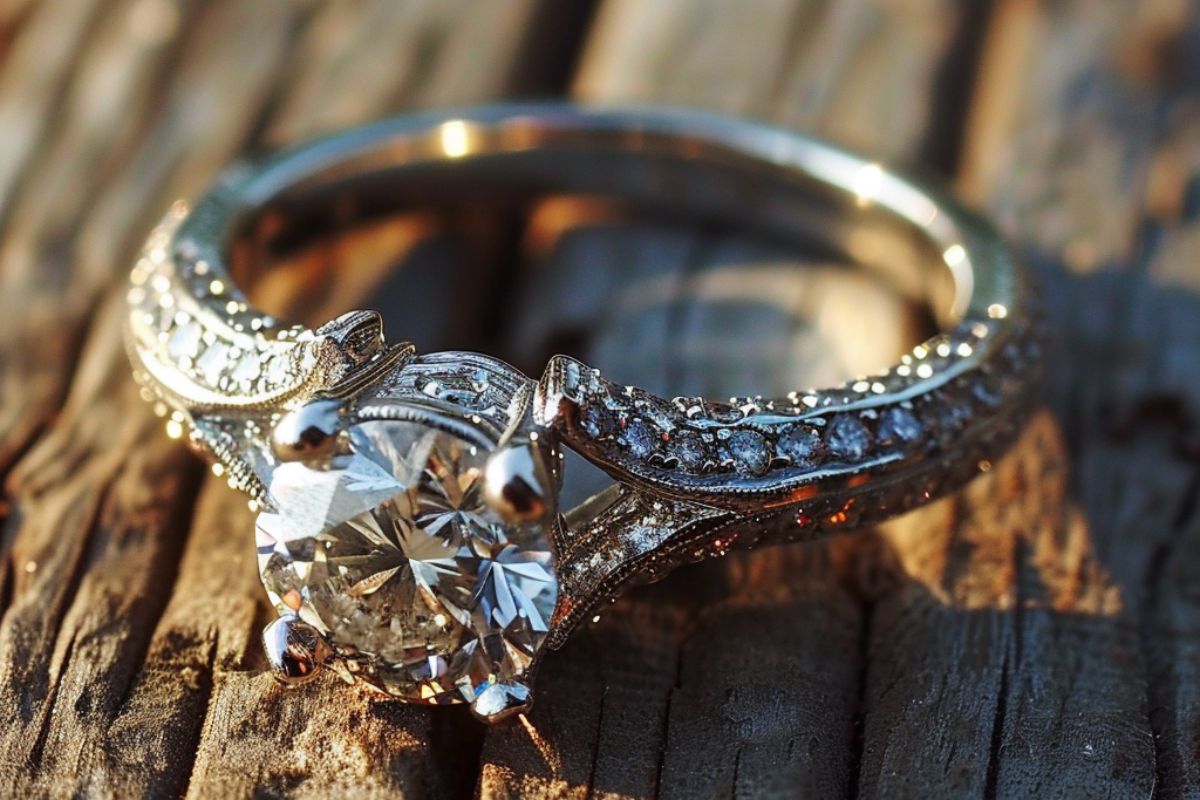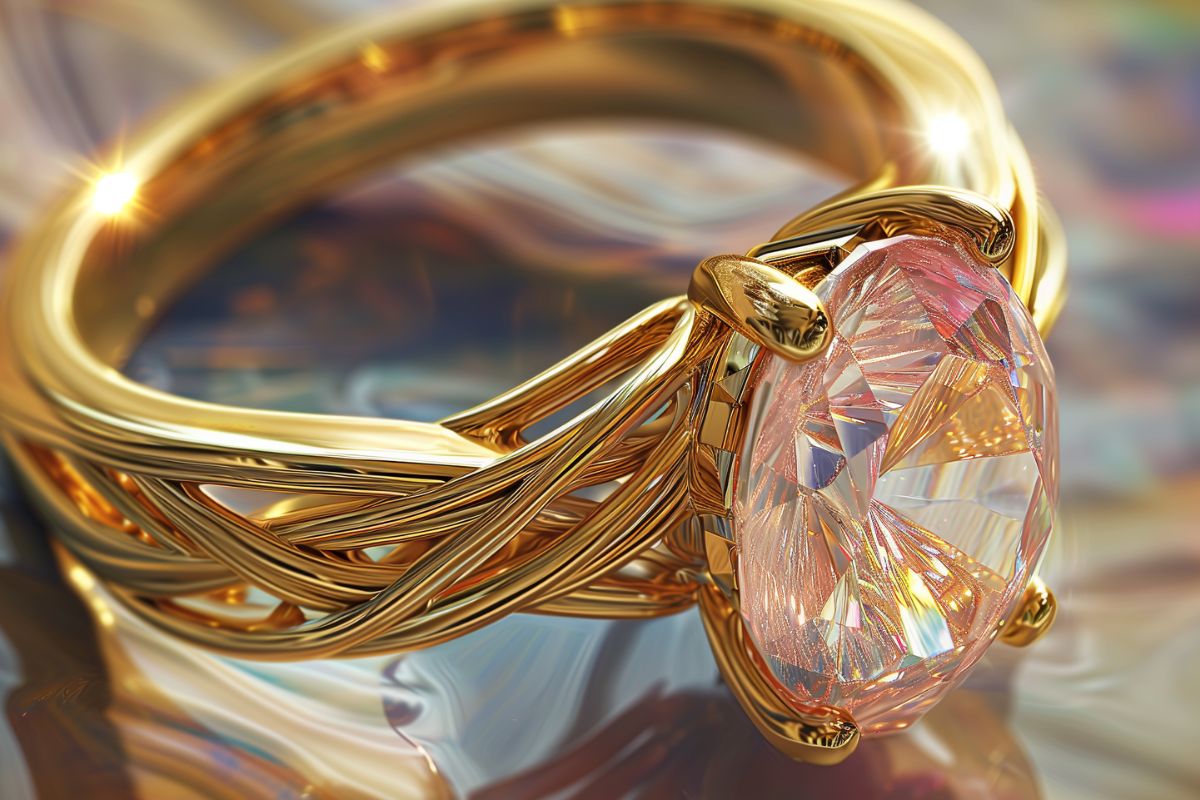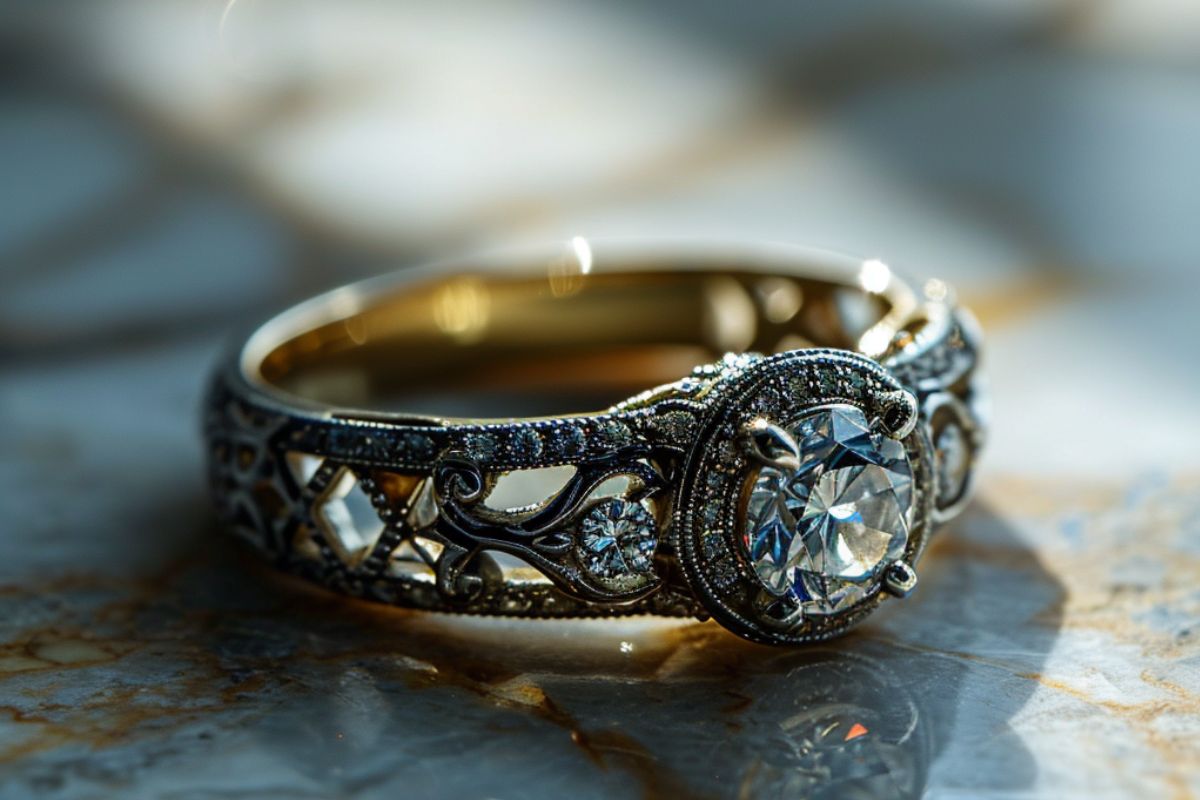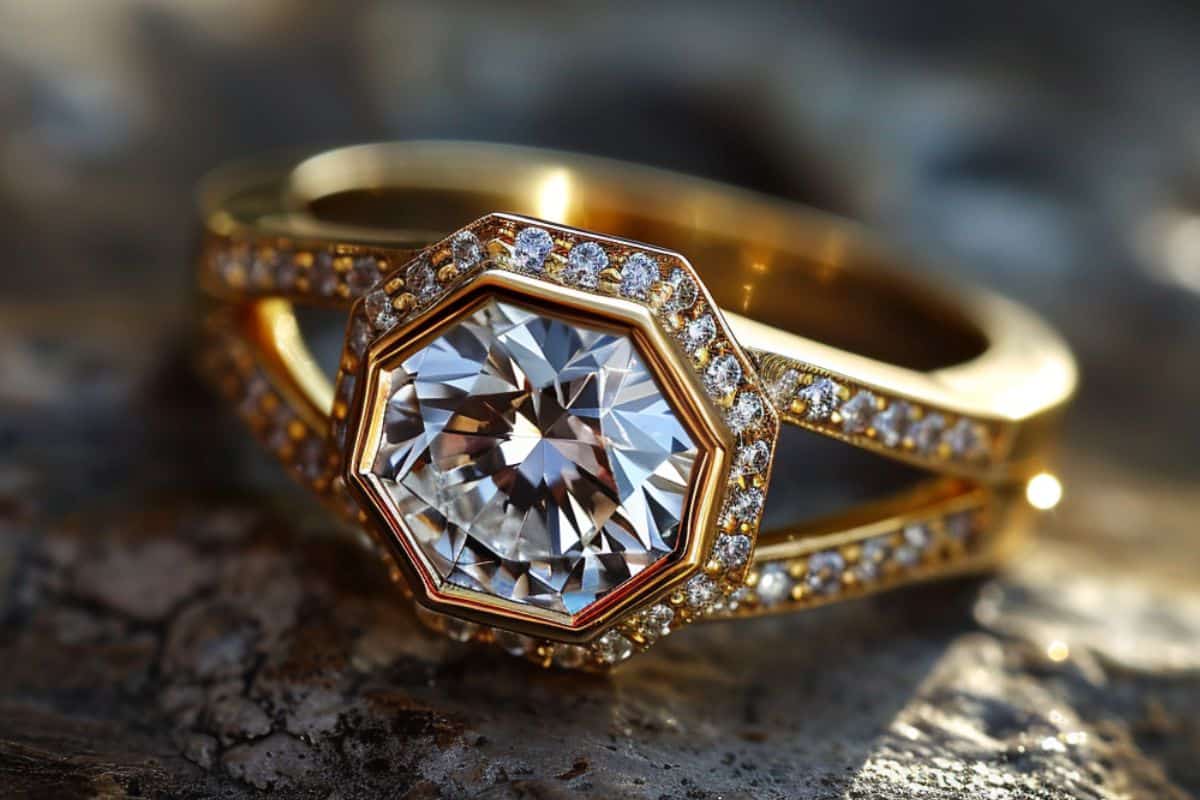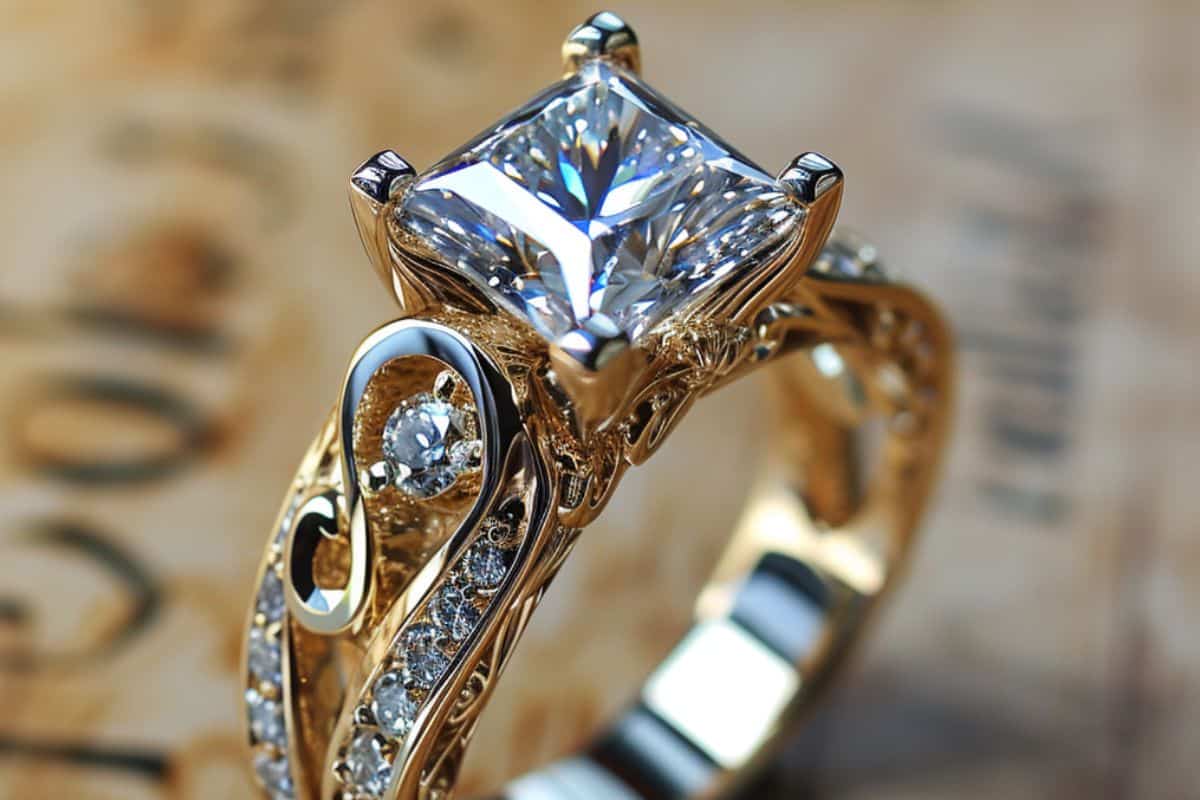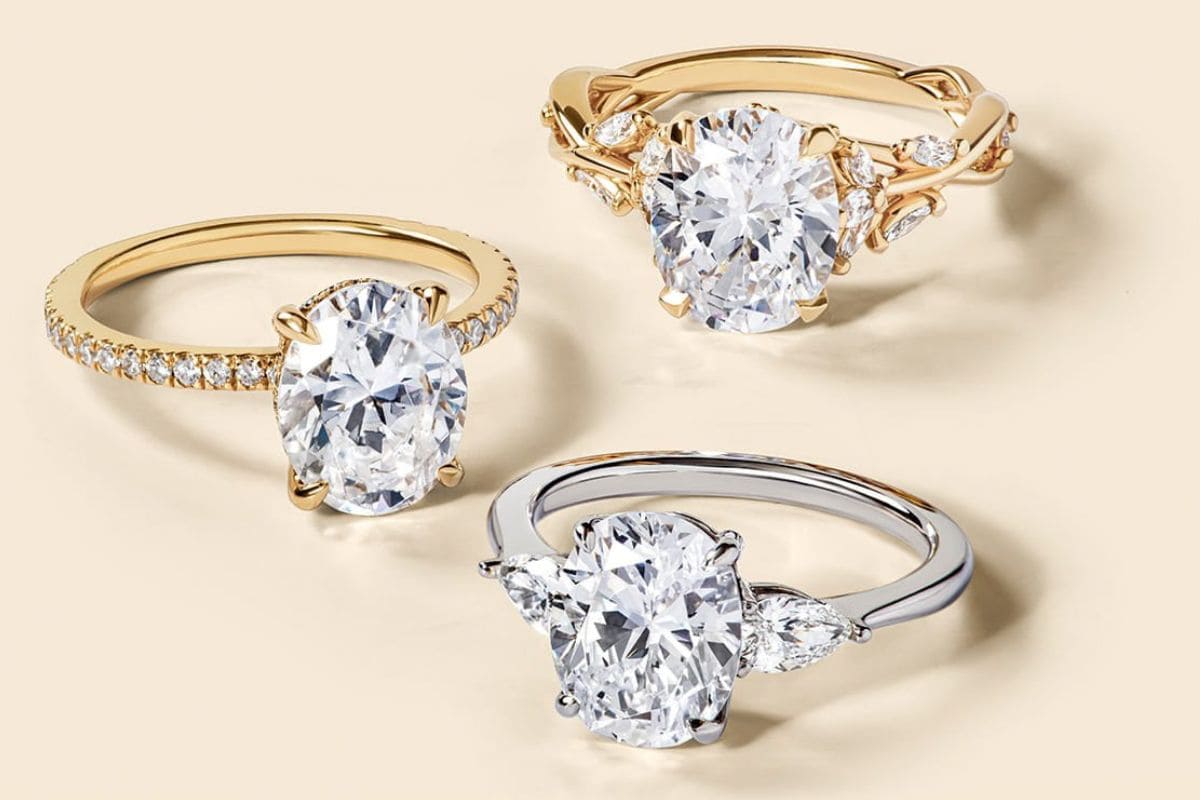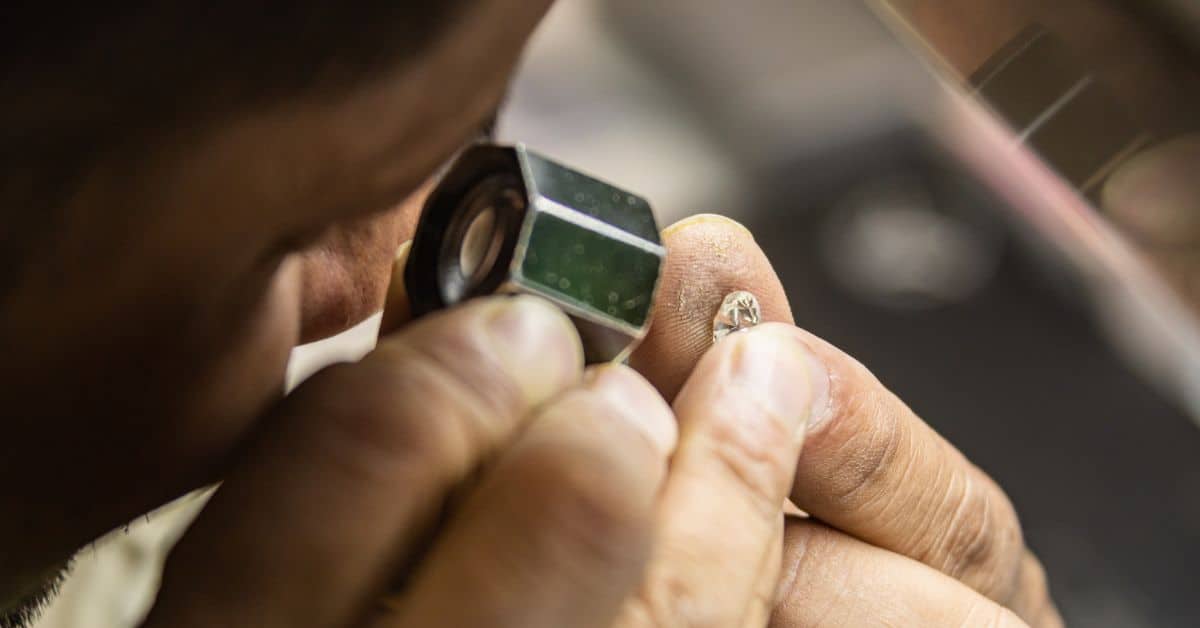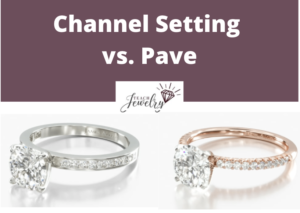
Channel and pave settings both feature small diamonds cascading down the band to complement the center one.
The main difference between channel and pave settings is the way diamonds are placed on the shank. In channel settings, they’re set in a shallow groove. Pave diamonds are often held by small prongs and sit on top of the band. Both enhance the ring’s brilliance.
Let’s compare channel versus pave settings, including pros and cons, how they’re different, and how to decide which is right for you.
What is a Channel Setting?
The distinguishing feature in channel settings is the crevice on its shank that’s filled with small gems. It includes a lip that reaches over their edges to secure them in place.
I’ve pointed out the channel in the engagement ring setting below.
Notice how the diamonds aren’t placed on top of the metal. They’re inside it.
The design adds a level of security to the accents to keep them from falling out of the setting.
Most channel settings are in the style of a half eternity ring, which means the diamonds wrap halfway around the shank.
This ring, from the online vendor where I bought my wife’s round-cut engagement ring, is an example.
It contrasts with a full eternity ring, where the channel goes all the way around. The full eternity is more common in wedding rings.
Pros
Available with Multiple Cuts
The first pro of a channel setting is multiple cuts of diamonds can be used, whether to match or contrast the main one.
Princess, round, baguette, and emerald cuts can each be placed side by side in the channel without significant gaps between them.
If you choose a traditional round brilliant as the main diamond, you can pair that with more round diamonds in the channel or with princess cuts.
Emerald and baguette cuts have a similar shape, so you can have an emerald on top paired with baguettes on the shank.
In the example below, baguette cuts are placed horizontally in the channel to provide a distinct rectangular shape against the round cut in the middle.
Baguettes are rarely used as the center diamond because of their lack of brilliance. So if the shape is appealing and you still want them included, a channel setting is an exceptional fit.
Security
They also effectively secure the diamonds. The cut in the shank is sized specifically for the diamonds, so they sit snug inside.
You’ll have less worry about them falling out during everyday activities, but I still recommend removing the jewelry during this time.
The setting is also unlikely to snag. Some types, such as shared prong settings, have prongs that often catch on clothing, furniture, and hair.
Channel settings don’t include any prongs on the band, so the only concern is if the main diamond is held by them.
Cons
Maintenance
Maintenance is difficult because of the quantity of small diamonds.
If some do fall out, you’ll have to find ones of the exact size and have a professional replace them.
A gap because of a missing gem would be noticeable, so you’d need to have it replaced quickly.
Take a look at the setting below.
Imagine the difficulty of fitting another diamond inside if one were to loosen, especially one in the middle.
Dirt can also get trapped between gems.
I recommend having it cleaned once or twice per year to prevent buildup.
Don’t Reflect as Much Light
Buyers add accents to their ring because it enhances brilliance without a significant increase in cost.
For example, let’s say you’ve chosen an Asscher cut because its elegance is appealing. A downside is its step-cut facets lack the brilliance you’ll find in princess, marquise, or round cuts.
Several small diamonds often cost less than increasing the carat weight of the main one.
A disadvantage of channel settings is the diamonds don’t add as much brilliance to the piece compared to pave because they’re placed inside the shank’s crevice.
What is a Pave Setting?
Pave settings feature diamonds on top the shank, though they’re often set in grooves that rise and fall.
They’re also held in place by mini-prongs or small beads.
Some pave designs include these diamonds around the whole shank, but in other cases, they stop halfway, like this one.
Twenty diamonds that weigh a total of 0.15 carats complement the round cut on top.
This demonstrates how pave diamonds are often between 0.01 and 0.02 carats.
My recommendation is round-cut pave diamonds if the center is a step-cut such as an emerald. It exhibits a warm glow but lacks brilliance, so the smaller diamonds compensate.
Pave settings contrast with solitaire settings, which have no other diamonds aside from the main one.
Pros
Enhances Sparkle
An advantage of a pave setting is it enhances the sparkle of the whole piece.
In the example below, you can tell how diamonds are placed on top of the shank.
They’re positioned to capture and reflect light instead of hiding in a crevice.
Even though the total carat weight (CTTW) increases, it’s less expensive than adding that same additional carat weight to the main diamond.
Variety of Designs
Pave settings also come in many designs and can be added to different types of shanks. The most popular is a single row of small diamonds, but some include two or three.
Wide bands have room to fit dozens of pave diamonds for maximum brilliance.
Whether it’s a cathedral or Tiffany setting, or one with a split shank, pave diamonds are an option.
Cons
Other Gemstones Aren’t the Best Fit
A downside of pave settings is they aren’t the best fit for gems other than diamonds.
Rubies, emeralds, and sapphires are more delicate than diamonds.
You can still find those options on the market like the one below, but it’s recommended you avoid them because of the difficulty in repairing the setting if it’s damaged.
Difficulty Resizing
Pave settings are also difficult to resize and modify.
There’s often dozens of small gems to deal with, and prongs or beads that hold them can weaken throughout the process.
This problem can sometimes be avoided if the diamonds are only on one part of the ring and if the adjustment is only half a size.
Be certain it’s the correct size before purchasing a ring with pave.
How are Channel and Pave Settings Different?
Pave Settings are Less Secure
Diamonds are less secure when they’re in a pave setting compared to channel.
The crevice where they sit in a channel setting provides a layer of protection. They aren’t as exposed to hits and bumps during everyday wear.
The difference is apparent when viewing the piece below at that angle.
The diamonds are clearly set inside the shank. They don’t knock loose as easily.
Pave diamonds on the band don’t have that level of security. The entire gem is vulnerable to hits, so exercise more caution when wearing a ring with pave setting compared to channel.
Channel Settings are More Expensive
With a wide band, the channel can hold larger diamonds. This results in channel settings often selling for a higher price than similar ones with pave.
For example, let’s compare the prices of a pave and channel setting from online jewelry retailer James Allen.
Both these settings are made from 14K white gold and feature diamonds cascading halfway down each side of the shank.

The diamonds on the shank are the same shape and clarity and have a similar color.
The difference is the average CTTW of the pave setting is 0.16 and 0.36 for the channel setting.
The channel setting only has four more diamonds, but it’s more than double the CTTW.
This pave setting costs $840, and this channel setting costs $1,275.
This is because more diamond can fit in the channel setting, which adds up to a higher CTTW and increases the price.
If you’re looking for a more affordable option, choose pave over channel.
Is a Channel or Pave Setting Right For You?
To help you decide between them, here are some guidelines.
Choose a channel setting if:
- The accents are another gemstones like rubies or sapphires
- You’re most concerned about the security of the gems in the setting
Opt for a pave setting for your ring if:
- Maximizing the brilliance of the whole piece is important to you
- You’re looking for an affordable setting that still has diamonds on the shank
Both settings offer unique designs and functionality, so explore each to find the right fit.

Jacob Clarke
Jacob Clarke is the founder of TeachJewelry.com.
He earned an Applied Jewelry Professional Diploma from the Gemological Institute of America (GIA) and now brings you essential information about diamonds, settings, and more.
Jacob has consulted with leading jewelry brands, and his work has been cited in Clean Origin, Diamond Nexus and industry publications.
He's also a member of the International Gem Society.
He enjoys discussing jewelry with readers, so contact him with any questions at jacob.clarke@teachjewelry.com.

